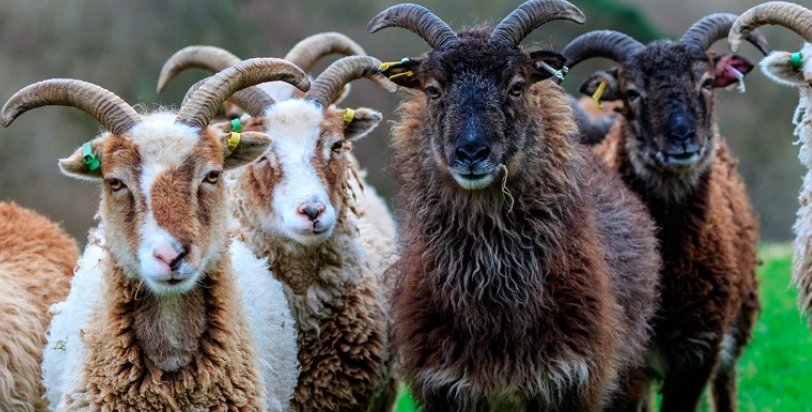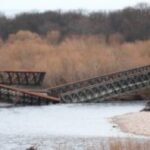Two veterinarians from the Outer Hebrides have made a fresh plea to protect rare Soay sheep on the remote Scottish archipelago of St Kilda, where hundreds starve each winter due to overpopulation and limited grazing. This latest appeal, reported today, highlights ongoing concerns about animal welfare on the uninhabited islands, urging the Scottish government and landowners to step in and manage sheep numbers.
Background on Soay Sheep and St Kilda
St Kilda sits about 40 miles west of the Outer Hebrides in the Atlantic Ocean. This group of islands and sea stacks forms a UNESCO World Heritage site known for its dramatic cliffs, seabird colonies, and unique wildlife.
The Soay sheep trace their roots back thousands of years. People first brought them to the islands in prehistoric times. These small, hardy animals have fleeces in shades from light tan to dark brown and roam free without human care.
Hirta, the main island, once had human residents who raised sheep until they left in 1930. After that, sheep from the smaller island of Soay were moved to Hirta. Today, no people live there year round, but researchers and seasonal workers visit.
The islands face harsh weather, with strong winds and limited grass growth in winter. This natural setting has allowed the sheep population to grow unchecked for decades.

The Starvation Crisis Explained
Vets David Buckland and Graham Charlesworth, based in Uist, say the problem stems from too many sheep competing for food. On Hirta, the population has reached over 1,800 animals, according to recent counts from the University of Edinburgh’s long running study.
Each winter, food runs short. Grass does not grow fast enough to feed all the sheep. As a result, weaker animals, especially lambs and older ewes, suffer and die from hunger.
The vets describe it as a real life survival contest, where only the strongest make it through. They have seen dead sheep during visits and heard reports from researchers on the ground.
This issue is not new. Similar concerns came up in 2023, when the vets started a petition to the Scottish government. That effort gained attention but led to no major changes.
Experts note that Soay sheep are a primitive breed, similar to those from the Neolithic era. Their ability to survive tough conditions makes them valuable for scientific research, but it does not prevent mass starvation events.
Calls for Welfare Controls and Management
The renewed appeal asks for the sheep to gain protected status under animal welfare laws. Right now, officials class them as wild animals, not farm livestock, so standard rules do not apply.
Buckland and Charlesworth want controlled culling or relocation to reduce numbers. They argue this would ease suffering and keep the population sustainable.
The National Trust for Scotland, which owns St Kilda, disagrees. They say the sheep are part of the natural ecosystem and should stay unmanaged. Interfering could harm the islands’ wild status.
The Scottish government shares this view. They point out that welfare laws cover domestic animals, not feral ones like these sheep.
Despite this, the vets keep pushing. They have taken their case to parliament before and plan more action. Supporters include animal rights groups and locals from nearby islands.
Here are key points from their proposal:
- Reduce sheep numbers to match available grazing land.
- Set up regular monitoring for health and population.
- Explore ways to move some sheep to other locations without harming the breed.
- Involve experts in creating a long term management plan.
Scientific Research and Long Term Studies
The University of Edinburgh runs the St Kilda Soay Sheep Project, started in 1985. This work tracks sheep behavior, genetics, and survival rates.
Researchers tag lambs each spring and monitor the herd year round. Data shows population booms and crashes, often tied to food shortages.
In 2025, the project continues to provide valuable insights. Scientists have published findings on how climate change affects the islands, with warmer winters possibly leading to more grass but also new challenges like parasites.
This research helps understand evolution in isolated groups. It has links to studies on other wild animals facing similar issues, such as deer overpopulation in some forests.
The project marked its 40th year recently, highlighting its importance. Teams use non invasive methods to gather info, avoiding harm to the sheep.
Broader Impacts on Conservation and Tourism
St Kilda draws tourists and birdwatchers in summer. Boat trips from the mainland offer views of the sheep and puffins. But welfare concerns could affect the site’s image.
Conservation groups worry that unmanaged sheep might damage fragile plants and soil. Overgrazing has led to erosion in some areas.
On the positive side, the sheep add to the islands’ appeal as a living history site. They represent ancient farming practices and attract funding for preservation.
Similar debates happen elsewhere. For example, in 2024, officials in the Falkland Islands managed feral sheep populations to protect native birds. Lessons from there could apply to St Kilda.
Public opinion leans toward action. Social media discussions show support for the vets’ campaign, with people sharing stories of animal suffering.
Challenges and Possible Solutions
Managing remote islands brings logistical hurdles. Getting to St Kilda requires boats or helicopters, and weather often delays trips.
Cost is another factor. Any control program would need funding from government or charities.
Experts suggest a balanced approach. This could include:
- Natural predators, though none exist on the islands now.
- Sterilization trials, tested on other feral animals.
- Limited hunting, but this raises ethical questions.
International guidelines on wildlife management could guide decisions. Groups like the World Wildlife Fund offer advice on humane population control.
The vets hope their latest call sparks real change. They point to successful programs in places like Australia’s outback, where feral animals get managed to prevent starvation.
Looking Ahead for St Kilda’s Sheep
As winter approaches in 2025, the sheep face another tough season. Without action, starvation will likely continue.
The debate pits wildlife purity against animal welfare. Finding middle ground could preserve both the breed and the ecosystem.
Readers, what do you think about managing these wild sheep? Share your views in the comments and spread this story to raise awareness.


















